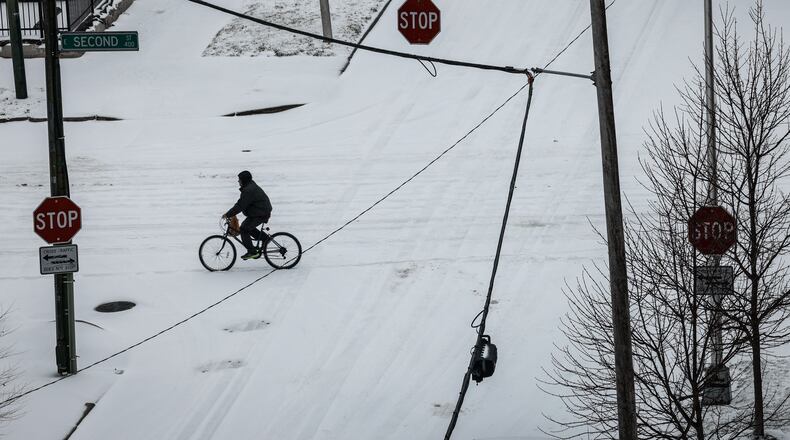Michael Sander, superintendent of Franklin Schools, said the high school held a remote learning day Thursday because it had to close last month due to COVID-19. The rest of the district is closed Thursday for a snow day and did not close previously for COVID-19.
Trotwood schools announced an asynchronous learning day, said Superintendent Reva Cosby. That means no live video classes, but students access assignments through Google Classroom, and teachers are available to help.
“We really did want to make sure that our students take every opportunity to do some reading or to do some type of work at some point in the day,” Cosby said.
Cosby said literacy is an area where students are behind, and she wanted to make sure the kids in the district stay engaged.
The icy weather Thursday also factored into Trotwood’s decision, she said, because it was less of a day where kids could safely play in the snow. Cosby said if her city had gotten 10 inches of fluffy snow, the district more likely would have called a snow day so kids could go out and play.
Most schools, though, closed completely on Thursday due to the combination of ice, sleet and snow that fell on the Miami Valley.
Kettering schools assistant superintendent of teaching and learning, Dan VonHandorf, said part of the reason Kettering chose to have a snow day Thursday was that effective remote learning is not something the district can pivot to in a day.
Brian Cayot, Centerville Classroom Teachers’ Association president, said it is difficult for teachers to put a lesson plan together for a remote learning day in just a few hours.
Students also may not have access to what is needed for remote learning, like a computer or internet access, Cayot said.
“There are still a lot of barriers in place for remote learning,” Cayot said.
Dayton Public Schools Superintendent Elizabeth Lolli agreed, saying it is more difficult to plan remote learning than it may seem. The district has been issuing Chromebooks and hotspots to students, but that takes time. In January, when DPS took off a week due to COVID-19, teachers sent paper packets home with students and could only use Google classroom if they knew all their students had internet access.
“Due to the unplanned nature of calamity days, it is not feasible for the district to have remote learning in place of snow days,” Lolli said. “This is because the district cannot ensure that all students have internet access.”
Centerville schools Superintendent Tom Henderson said the district has five calamity days in place for weather and has previously communicated that to families. He said that’s something the district has done for years in dealing with bad weather.
There’s also value in a snow day, he said.
“As a veteran school official I truly believe that every day of instruction is important,” Henderson said. “With that said, I think if you asked parents and grandparents, some would say that the joy of playing out in the snow or going sledding with your family has some value as well.”
About the Author

